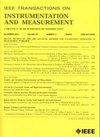Research on Rigid Guide Deformation Detection Based on Line Structured Light 3-D Reconstruction Algorithm
IF 5.9
2区 工程技术
Q1 ENGINEERING, ELECTRICAL & ELECTRONIC
IEEE Transactions on Instrumentation and Measurement
Pub Date : 2025-06-27
DOI:10.1109/TIM.2025.3583381
引用次数: 0
Abstract
The rigid guide is an important part of the coal mine lifting system, serving a guiding function during the cage operation, making guide deformation detection crucial for ensuring safety in coal mine production. To address the issues of high detection safety costs, long maintenance times, and poor detection accuracy in the existing manual inspection mode, this article proposes installing detection devices such as industrial cameras and laser scanners on the hoisting container’s roof. During the operation of the lifting system, rigid guide contour laser stripe images are captured, and a laser and machine vision fusion reconstruction model is derived to complete the 3-D reconstruction of the guide point cloud model and obtain guide deformation parameter information. Building upon this, an adaptive center extraction and smoothing algorithm (ACES-R) for the reflective surface stripes of rigid guides is proposed. This method employs an adaptive dynamic contour tracking algorithm and incorporates laser stripe morphology features to effectively segment the laser stripe region. Under complex lighting conditions, including strong reflection interference, overlapping noisy laser segments, and uneven stripe widths, it accurately extracts guide contour information and reconstructs a complete guide point cloud model, outperforming traditional center extraction algorithms. In guide deformation measurement experiments, multiple repeated measurements show that the average error does not exceed 0.2 mm, and the standard deviation (SD) of the measurement results remains within 0.1 mm.基于线结构光三维重建算法的刚性导轨变形检测研究
刚性导轨是煤矿提升系统的重要组成部分,在保持架作业过程中起导向作用,因此导轨变形检测对煤矿安全生产至关重要。针对现有人工检测方式存在检测安全成本高、维护时间长、检测精度差等问题,本文提出在吊装集装箱顶板安装工业摄像机、激光扫描仪等检测设备。在提升系统运行过程中,采集刚性导轨轮廓激光条纹图像,推导激光与机器视觉融合重建模型,完成导轨点云模型的三维重建,获取导轨变形参数信息。在此基础上,提出了一种针对刚性导轨反射面条纹的自适应中心提取与平滑算法(ACES-R)。该方法采用自适应动态轮廓跟踪算法,结合激光条纹形貌特征对激光条纹区域进行有效分割。在反射干扰强、噪声激光段重叠、条纹宽度不均匀等复杂光照条件下,精确提取制导轮廓信息,重建完整的制导点云模型,优于传统的中心提取算法。在导轨变形测量实验中,多次重复测量表明,测量结果的平均误差不超过0.2 mm,测量结果的标准差(SD)保持在0.1 mm以内。
本文章由计算机程序翻译,如有差异,请以英文原文为准。
求助全文
约1分钟内获得全文
求助全文
来源期刊

IEEE Transactions on Instrumentation and Measurement
工程技术-工程:电子与电气
CiteScore
9.00
自引率
23.20%
发文量
1294
审稿时长
3.9 months
期刊介绍:
Papers are sought that address innovative solutions to the development and use of electrical and electronic instruments and equipment to measure, monitor and/or record physical phenomena for the purpose of advancing measurement science, methods, functionality and applications. The scope of these papers may encompass: (1) theory, methodology, and practice of measurement; (2) design, development and evaluation of instrumentation and measurement systems and components used in generating, acquiring, conditioning and processing signals; (3) analysis, representation, display, and preservation of the information obtained from a set of measurements; and (4) scientific and technical support to establishment and maintenance of technical standards in the field of Instrumentation and Measurement.
 求助内容:
求助内容: 应助结果提醒方式:
应助结果提醒方式:


